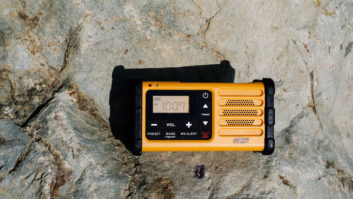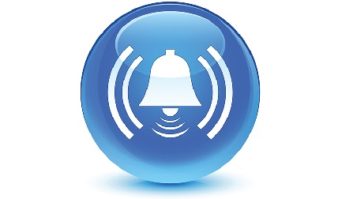
Fig. 1: A compact, dimmable LED “flashlight.”
The Middle Atlantic and Northeast regions got hammered with several severe wind and rain storms in October. Extensive power failures were the result, forcing many to the drug store for flashlights and batteries.
Consulting engineer R. Morgan Burrow, Jr., P.E., came across a compact LED Glow Bright Switch “flashlight,” pictured in Fig. 1.
These LED lamps are dimmable, too. Stick one in your vehicle glove box, or in the drawer at your transmitter site. The emergency lights have a battery saver tab, shown in Fig. 2, which must be removed before use, but conserves the battery until the light is used.

Fig. 2: The battery saver tab on the back helps keep the AAA batteries fresh.
The lights provide 200 lumens and can be mounted with either magnets, a hook-and-loop fastener or a hook. The light is powered with three AAA batteries, which are included in the initial purchase.
It’s cheap insurance for a time when you need an emergency light.
# # #
Fig. 3: An interface schematic for a remote microphone control panel, using a NotaBotYet board.


Fig. 4: The remote interface and wiring, ready to install.
Brian Gullikson is the chief engineer for the University of Northwestern St. Paul stations, KTIS, KDNW and KDNI. Brian and colleague Mark Allard wanted to interface a PR&E mike control panel to a GPIO port on his Axia Power Station.
Using a NotaBotYet breakout-with-relay board, Mark came up with the Visio hookup drawing (shown in Fig. 3).
Not only does the schematic handle the control for the switches, but it flips around the surface-mount LEDs on the panel to the current revision, using the NotaBotYet board.
Fig. 4 shows the parts used. A variety of problem-solving NotaBotYet boards are available. Find out more by heading to www.notabotyet.com.
The NotaBotYet boards are available from BGS and BSW.
# # #
Terry Skelton retired from Clear-Com last year but stays up on the industry through the pages of Radio World and the Workbench column.
Terry shares a good source of hand tools that are suitable for electronics work. He found these at the national “hobby” chain A.C. Moore.
They had a medium-priced line and a higher (approximately $15) priced line of needle-nosed pliers, diagonal-cutters and similar tools. These tools typically are used for jewelry.
With Radio Shack and many local wholesale electronics parts houses gone, and the tools in the big box home improvement stores more suitable to attacking the power grid, these small tools are a good find, especially if you’re in a hurry.
# # #

Fig. 5: Useful Faber-Castell eraser pencils.

Fig. 6: The fine tip makes the pencil eraser ideal for fine detail work.
Shortly after we published Greg Muir’s tip of using the old-style pencil erasers, shown in Fig. 5 and described in the Nov. 22 column, Greg was called to diagnose a transmitter that was on life support on the top of a snowy mountain. While there, Greg had to clean an intermittent rotary switch, and Fig. 6 demonstrates the beauty of these erasers.
Since they can be sharpened to a fine tip, they work great for very small detail work — such as the wiper of the rotary switch.
Contribute to Workbench. You’ll help fellow engineers and qualify for SBE recertification credit. Send Workbench tips to [email protected]. Fax to (603) 472-4944.
Author John Bisset has spent 48 years in the broadcasting industry and is still learning. He handles West Coast sales for the Telos Alliance. He is SBE certified and is a past recipient of the SBE’s Educator of the Year Award.
###







